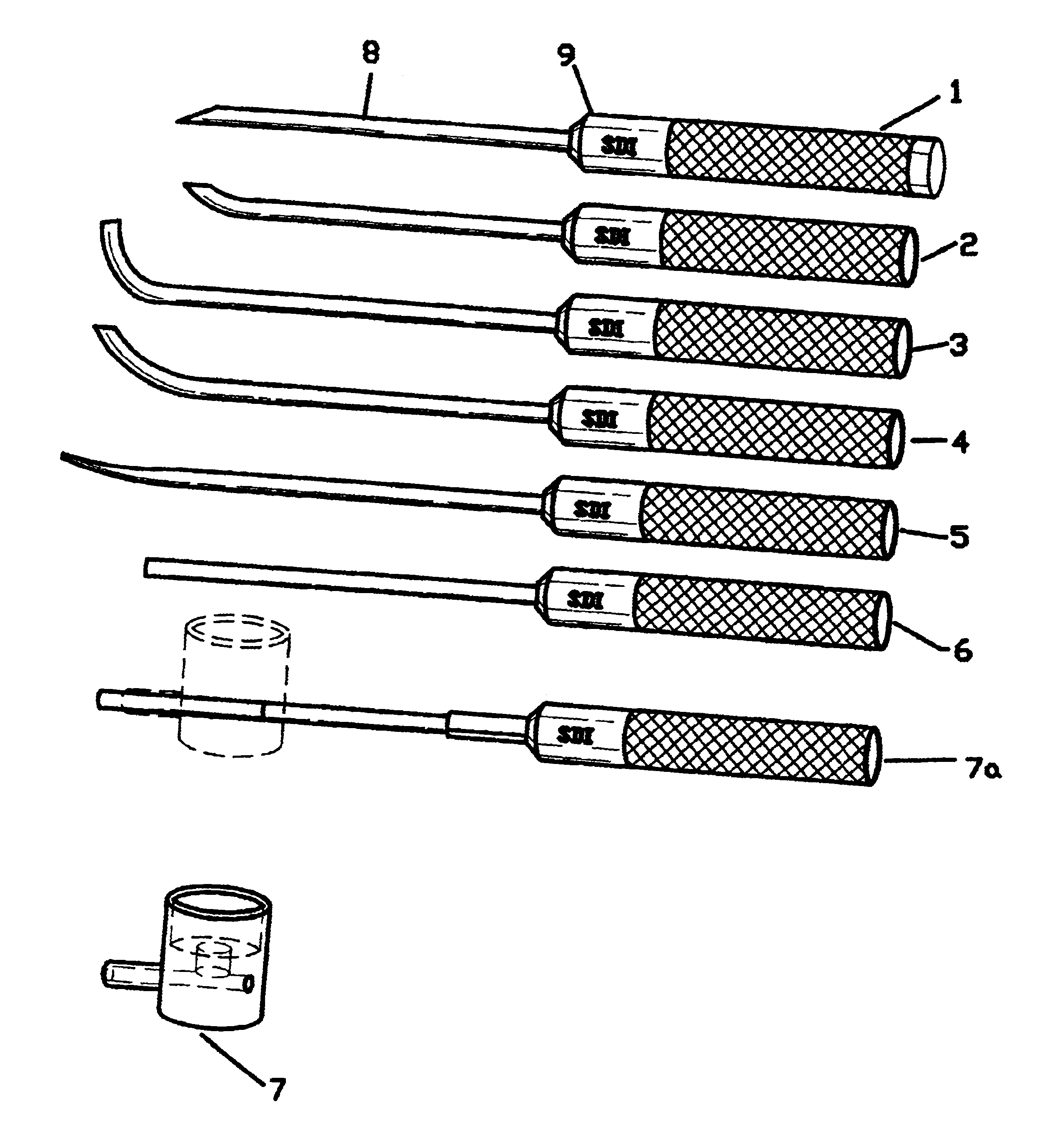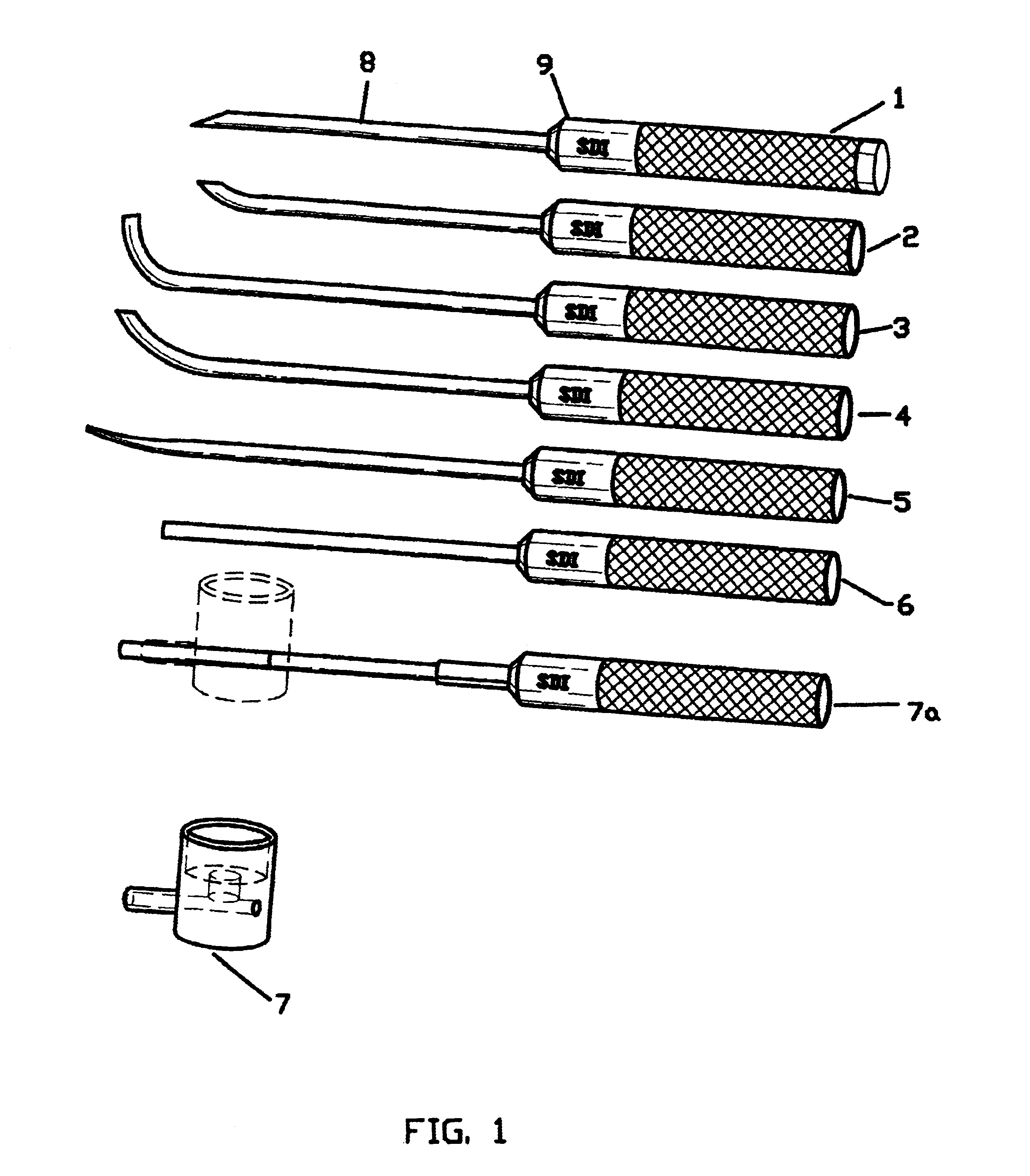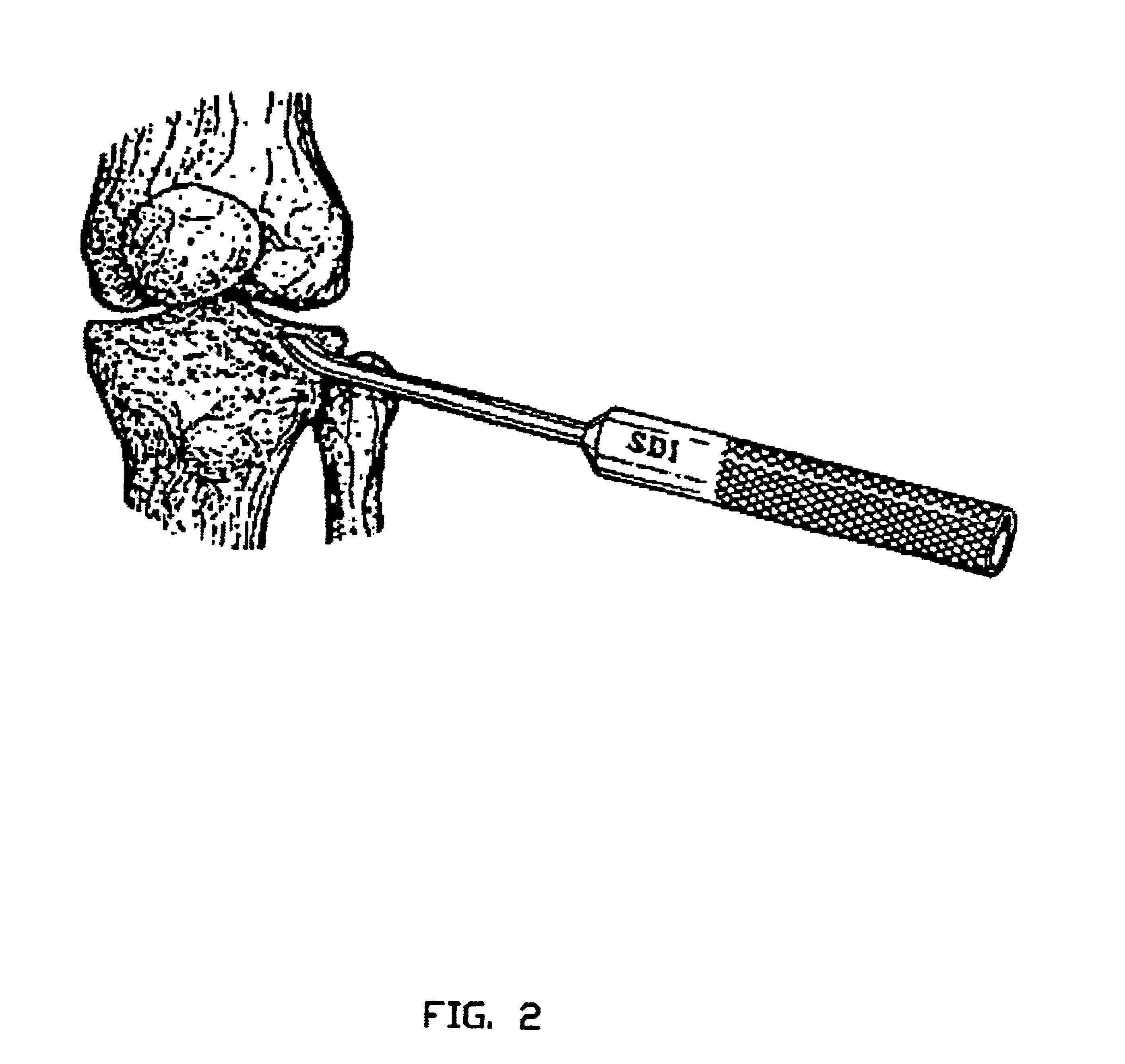Process and instrumentation for arthroscopic reduction of central and peripheral depression fractures
- Summary
- Abstract
- Description
- Claims
- Application Information
AI Technical Summary
Benefits of technology
Problems solved by technology
Method used
Image
Examples
Embodiment Construction
FIG. 1 shows a perspective view of the instrument set used to affect the process of this invention. The instruments, numbers 1 through 5 have rod-like probes, #8, attached to handles, #9. The probes are sufficiently long to reach from outside the skin of the patient, to the depths of the damaged joint. Each probe is shaped to enable access to the joint inner anatomy. The terminal tip of each probe is shaped to perform a particular task.
To do an Arthroscopic reduction of a central or peripheral depression fracture of the tibial plateau, utilizing a lateral approach, make a 1 to 2 cm incision anterior and lateral to the fibular head. Using the C Arm for fluoroscopic observation, drill a 4.5 mm diameter hole through the lateral cortex of the tibia, at the approximate level of the epiphysis. This hole should be inferior to or at the level of the bone fragments which are resulting from the depression fracture. The purpose of this 4.5 mm hole is to afford access to the base of the fractur...
PUM
 Login to View More
Login to View More Abstract
Description
Claims
Application Information
 Login to View More
Login to View More - R&D
- Intellectual Property
- Life Sciences
- Materials
- Tech Scout
- Unparalleled Data Quality
- Higher Quality Content
- 60% Fewer Hallucinations
Browse by: Latest US Patents, China's latest patents, Technical Efficacy Thesaurus, Application Domain, Technology Topic, Popular Technical Reports.
© 2025 PatSnap. All rights reserved.Legal|Privacy policy|Modern Slavery Act Transparency Statement|Sitemap|About US| Contact US: help@patsnap.com



